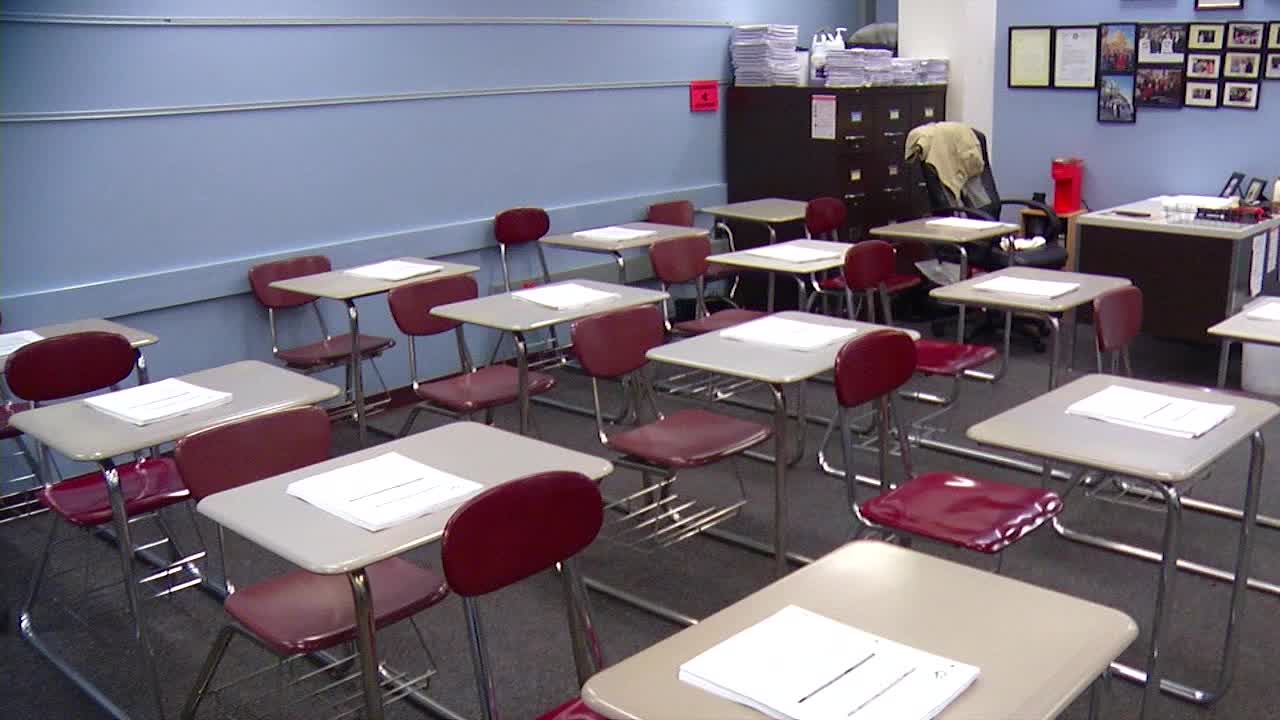Northside Achievement Zone sets sights on new school year, seeks to close education gaps
[anvplayer video=”5131887″ station=”998122″]
The Minnesota State Fair kicks off the countdown for most K-12 students to return to the classroom throughout the state.
Some schools welcomed students back today, but most will start the Tuesday after Labor Day, and many students, parents, and teachers are still feeling the impact of the pandemic.
Last week, a new report from the Minnesota Department of Education (MDE) showed slight declines statewide in multiple subjects during the last school year.
“This is sad, this is upsetting,” said Sondra Samuels, President, and CEO of the Northside Achievement Zone, in an interview with 5 EYEWITNESS NEWS.
With a large focus in north Minneapolis, the Northside Achievement Zone works with families to close the achievement gap.

Empty desks in a classroom. (FILE/KSTP)
But Samuels said the recently released North Star Accountability report from MDE is a wake-up call for everyone.
“We’re in this critical moment, and it is a break the glass pull the alarm moment in our state and in our country,” Samuels stated.
“I’m not gonna lie, the pandemic wasn’t really a good situation,” said Marvion Scott. Scott graduated in 2022 from Patrick Henry High School.
“I will say that I was definitely set behind — before the COVID pandemic, I’d say my GPA was probably, it was like a solid 3.0,” Scott said. “So it was like average GPA. And after the COVID, it dropped to like a 1.7, 1.5.”
Scott’s former school is part of Minneapolis Public Schools, one of 15 districts that will be receiving extra help from the state following the report.
“We are not surprised because we knew that the pandemic had an impact on our students, not only academically but also in their social, emotional and mental, mental health and well-being,” stated Dr. Heather Mueller, Commissioner of the Minnesota Department of Education.
Mueller says the extra support will address those concerns.
“This is not a metro problem,” Samuels noted. “It’s not a rural problem, it’s not a black problem, it’s not a white indigenous problem. It’s a shared problem.”